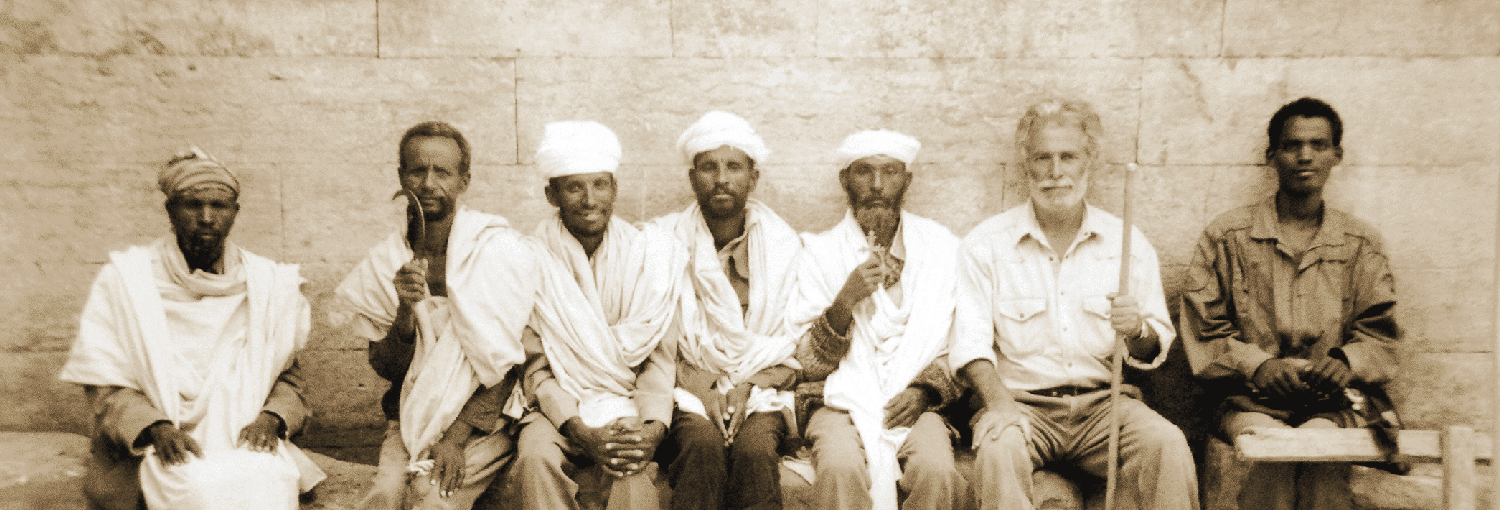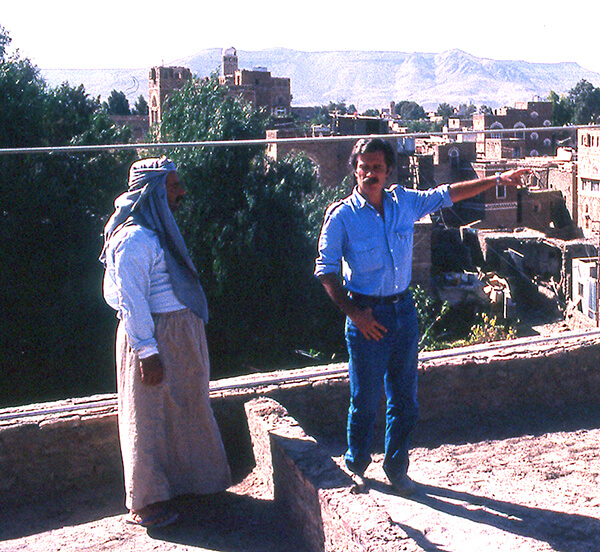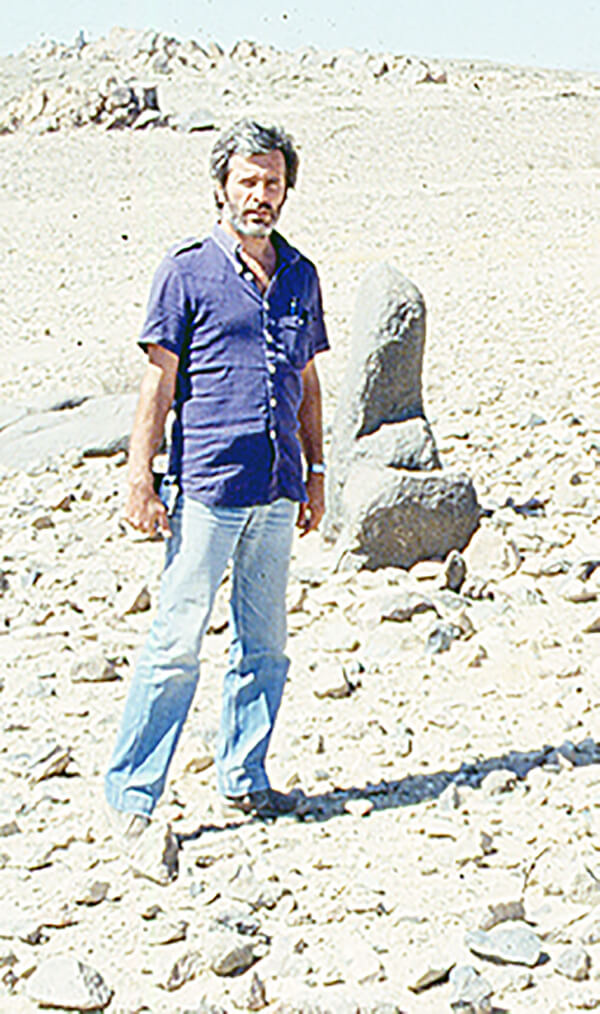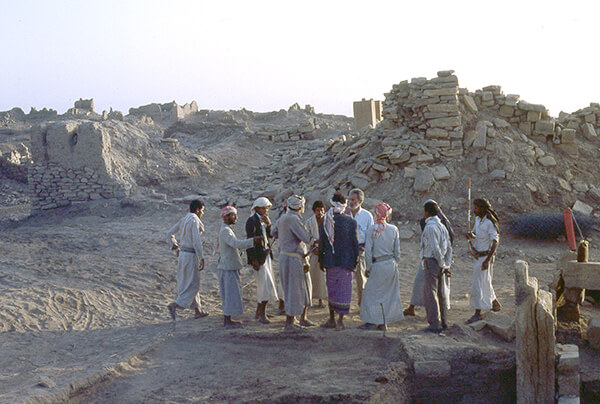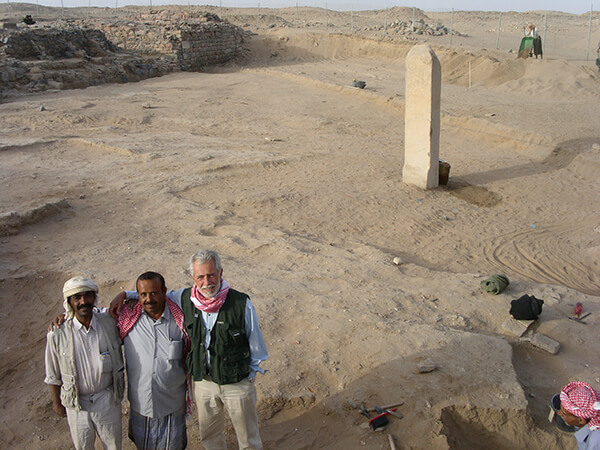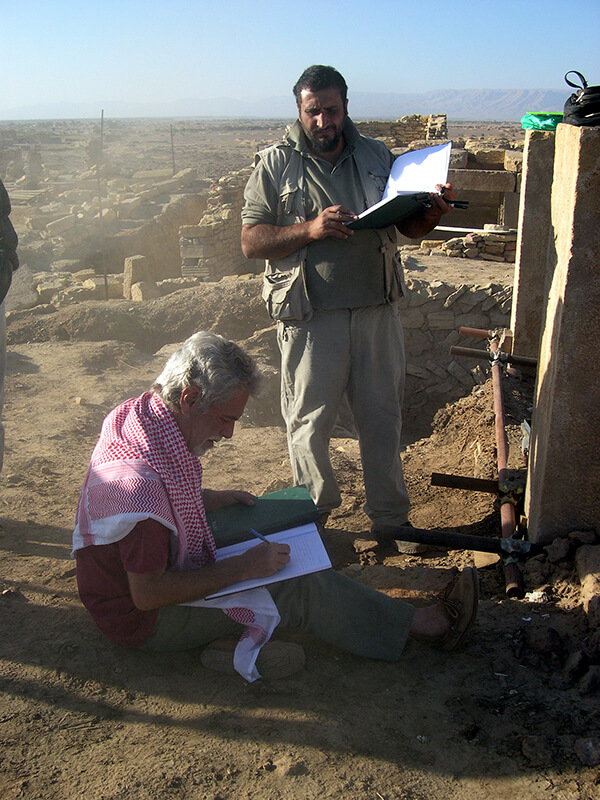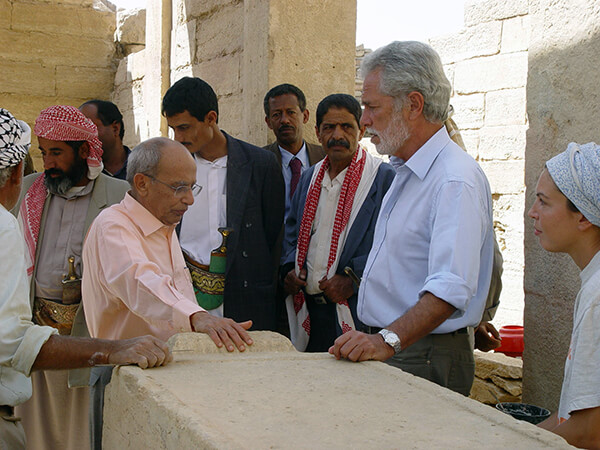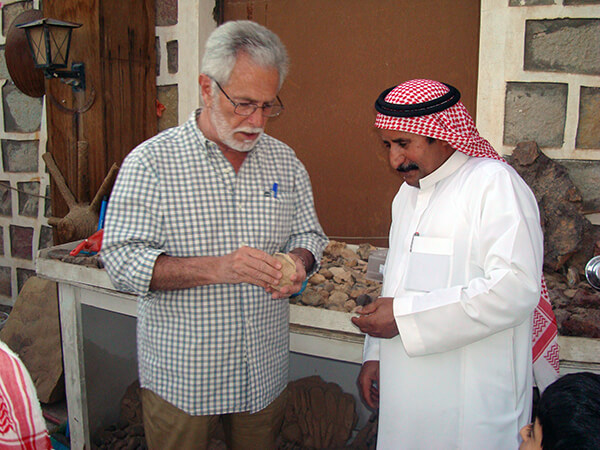| 1970 | Entry: Palestina, Enciclopedia Italiana dell’Arte Antica, Classica e Orientale, Supplemento 1970, 577–592. Rome: Istituto della Enciclopedia Italiana fondata da G. Treccani. | - | |
| 1972 | Review: P.R. de Miroschedji, L’époque pré-urbaine en Palestine, Paris 1971, Oriens Antiquus 11, 145–146. | - | |
| 1974a | Sigilli a stampo dell’Istituto Orientale di Napoli, Annali dell’Istituto Universitario Orientale di Napoli 34, 577–583. | - | |
| 1974b | Tell Munbatah: un nuovo sito della ‘cultura caliciforme’ nella Siria del Nord, Oriens Antiquus 13, 249–270. | - | |
| 1974c | Review: R.M. Boehmer, Boğazköy-Hattuša. Ergebnisse der Ausgrabungen des Deutsches Archäologisches Instituts und der Deutschen Orient-Gesellschaft, herausgegeben von Kurt Bittel. VII. Die Kleinfunde von Boğazköy, aus den Grabungskampagne 1931-1939 und 1952-1969 (=Wissenschaftliche Veröffentlichung der Deutschen Orient-Gesellschaft 87), Berlin 1972, Oriens Antiquus 13, 238–241. | - | |
| 1975a | Review: J. Mallet, Tell el-Far‘ah (région de Naplouse). L’installation du Moyen Bronze antérieure au rempart (Cahiers de la Revue Biblique 14), Paris 1973, Oriens Antiquus 14, 82–85. | - | |
| 1975b | Review: V. Karageorghis, Cypriote Antiquities in the Pierides Collection, Larnaca, Cyprus (n.d.), Oriens Antiquus 14, 180. | - | |
| 1976a | Le lance nell’Asia Anteriore nell’età del Bronzo. Studio tipologico (= Università di Roma, Istituto di Studi del Vicino Oriente, Studi Semitici 47). Rome. | - | |
| 1976b | Su alcune punte di lancia mesopotamiche di periodo babilonese, Annali dell’Istituto Universitario Orientale di Napoli 36, 226-232. | - | |
| 1976c | Due punte di lancia iscritte da Tell Mardikh-Ebla, Rivista di Studi Orientali 50. 31-41. | - | |
| 1977 | Review: J.R. Stewart, Tell el-‘Ajjūl. The Middle Bronze Age Remains, Studies in Mediterranean Archaeology 38, Göteborg 1974, Oriens Antiquus 16, 168–172. | - | |
| 1978a | Fluttuazioni territoriali e caratteristiche tipologiche degli stanziamenti nella regione del Matah (Siria). Nota preliminare, in Atti del 1o Convegno italiano sul Vicino Oriente antico, Roma 22-24 aprile 1976 (= Centro per le Antichità e la Storia dell’Arte del Vicino Oriente antico, Orientis Antiqui Collectio 13). Rome, 83–94. | - | |
| 1978b | Per un’archeologia tridimensionale. Riflessioni sulla ceramica della Siria dell’età del Ferro, Antiqua 11, 25–30. | - | |
| 1979 | La cittadella aramaica di Hama. Attività, funzioni e comportamento (= Centro per le Antichità e la Storia dell’Arte del Vicino Oriente antico, Orientis Antiqui Collectio 15). Rome. | - | |
| 1980a | Riconsiderazioni sul sistema ponderale di Ebla, Oriens Antiquus 19, 161–169. | - | |
| 1980b | Storia della ricerca Archeologica in Siria e Palestina, Storia dell’archeologia (Librex), 48–55. Rome. | - | |
| 1980c | Entries: Amuq; Ceramica della Mesopotamia; Gaza; Gerar; Gemdet Nasr; Hama; Hazor; Karkemish; Masada; Siria antica: archeologia della Siria dell’età del Bronzo; Tell; Tell el-‘Ubayd; Tell Hassuna; Urartu; Ziqqurat, Grande Dizionario Enciclopedico UTET. Turin. | - | |
| 1980d | Commento critico-bibliografico ai rilievi scolpiti dei sovrani Assurnasirpal II, Salmanassar III, Tiglatpileser III, Sargon II, Sennacherib, in Gli Assiri. La scultura dal regno di Assurnasirpal II al regno di Assurbanipal (883-631 a.C.). Rome: De Luca Edizioni d’Arte. | - | |
| 1980e | Review: J. Ringel, Césarée de Palestine. Étude historique et archéologique, Paris (n.d.), Oriens Antiquus 19, 229–230. | - | |
| 1980f | Prospezione geo-archeologica nello Yemen del Nord. Notizia di una prima ricognizione (1980), Oriens Antiquus 19, 307–313. | PDF |  |
| 1981a | Il fattore idrologico nell’economia di Ebla, Oriens Antiquus 20, 1–36. | - | |
| 1981b | Two Prehistoric Cultures and a New Sabaean Site in the Eastern Highlands of North Yemen, Raydān. Journal of Ancient Yemeni Antiquities and Epigraphy 4, 191–204, pls I–XIII. | PDF |  |
| 1982a | Ricerche archeologiche nella Repubblica Araba Yemenita. Notizia di una seconda ricognizione, Oriens Antiquus 21 (1-4), 237–253, pls XII–XVI. | PDF |  |
| 1982b | 1982 IsMEO Activities in the Yemen Arab Republic, East and West 32 (1-4), 230–231. | PDF |  |
| 1983 | Activities of the Italian Archaeological Mission in the Yemen Arab Republic (1983 Campaign), East and West 33, 340–344. | PDF |  |
| 1984a | La paleo-ecologia di Ebla alla luce dei testi amministrativi, in L. Cagni (ed.), Il bilinguismo a Ebla. Atti del Convegno internazionale di Napoli (19-22 aprile 1982) (Istituto Universitario Orientale, Dipartimento di Studi Asiatici, Series Minor 22), 329–335. Naples. | - | |
| 1984b | Ricerche della Missione Archeologica Italiana nella Repubblica Araba Yemenita, in Atti del II Convegno su: La presenza culturale italiana nei Paesi Arabi: storia e prospettive, Sorrento, 18-20 November 1982, 326–328. Rome: Istituto per l’Oriente. | - | |
| 1984c | A. de Maigret, L. Costantini and F.G. Fedele, The Bronze Age Culture of the Yemen Arab Republic, Rome, Abstract from East and West 34, Rome: IsMEO / Istituto Italiano per il Medio ed Estremo Oriente. | - | |
| 1984d | A Bronze Age for Southern Arabia, East and West 34, 5–36. | PDF |  |
| 1985 | de Maigret, A., G.M. Bulgarelli, L. Costantini, P. Cuneo, F.G. Fedele, V. Francaviglia, U. Scerrato, M. Tosi and G. Ventrone, Archaeological activities in the Yemen Arab Republic, 1985, East and West n.s. 35 (4), 337–395. | PDF |  |
| 1986 | de Maigret, A., G.M. Bulgarelli, L. Costantini, M. Cucarzi, P. Cuneo, F. Di Mario, F.G. Fedele, V. Francaviglia, G. Gnoli, B. Marcolongo, A.M. Palmieri, G. Pettinato, U. Scerrato, M. Tosi and G. Ventrone, Archaeological activities in the Yemen Arab Republic, East and West 36 (4), 376–470. | - | |
| 1987a | Entries: Marib, il porto del deserto, Ma‘in, dove i Minei inventarono il commercio, Timna, la città dei sessantacinque templi, Città sepolte. Origine e splendore delle città antiche, 1891-1896, 1907-1914. Rome: Curcio Editore. | - | |
| 1987b | Aṣr nuḥāsī fī janūb al-jazīra al-ʿarabiyya (The Bronze culture in Southern Arabia), Al-Iklīl, 73–96. | - | |
| 1987c | Die Bronzezeit des Jemen, in W. Daum (ed.), Jemen. 3000 Jahre Kunst und Kultur des glücklichen Arabien, 39–49. Innsbruck /Frankfurt-on-Main: Pinguin. | - | |
| 1987d | The Yemeni Bronze Age, in W. Daum (ed.), Yemen. 3000 Years of Art and Civilisation in Arabia Felix, 38–43. Innsbruck/Frankfurt-on-Main: Pinguin. [Translation in English from the German edition 1987c]. | - | |
| 1987e | La Missione Archeologica Italiana nello Yemen del Nord, Levante 29 (3) (September 1987), 47–59. | - | |
| 1987f | Nel leggendario Regno di Saba, Archeo. Attualità del passato 29 (July 1987), 21–27. | - | |
| 1988a | Archaeological Survey in the Wādī Yalā Antiquities, in A. de Maigret (ed.), The Sabaean Archaeological Complex in the Wādī Yalā (Eastern Ḫawlān aṭ-Ṭiyāl, Yemen Arab Republic). A preliminary report (Reports and Memoirs 21), 1–20, Rome: Istituto Italiano per il Medio ed Estremo Oriente. [In English and Arabic.] | - | |
| 1988b | A. de Maigret, F.G. Fedele and F. Di Mario, Lo Yemen prima del Regno di Saba, Le Scienze 234 (February 1988), 12–23. | - | |
| 1988c | Die Sabäer vor der Königin von Saba, in W. Daum (ed.), Die Königin von Saba. Legende und Archäologie zwischen Morgenland und Abendland, 36–39. Stuttgart/Zürich: Belser Verlag. | - | |
| 1989a | Le attività di formazione e di cooperazione archeologica condotte dalla Missione Italiana dell’IsMEO nello Yemen del Nord, Cooperazione, 87 (September 1989), 64–65. | - | |
| 1989b | Activity of the Italian Archaeological Mission in Yemen Arab Republic, Vestnik Drevnej Istorii 3, 155–163. [in Russian] | - | |
| 1989c | A. de Maigret and C.J. Robin, Les fouilles italiennes de Yalâ (Yémen du Nord): nouvelles données sur la chronologie de l'Arabie du Sud préislamique, Académie des Inscriptions et Belles-Lettres, Comptes rendus des séances de l'année 1989 133 (2), 255–291. | PDF |  |
| 1989d | A. de Maigret, C. Azzi, B. Marcolongo and A.M. Palmieri, Recent pedogenesis and neotectonics affecting archaeological sites in North Yemen, Paléorient 15 (1), 239–243. | - | |
| 1990a | A. de Maigret (ed.), The Bronze Age Culture of Ḫawlān aṭ-Ṭiyāl and Al-Ḥadā (Republic of Yemen). A first general report (Reports and Memoirs 24). Rome: Istituto Italiano per il Medio ed Estremo Oriente. | - | |
| 1990b | Scoperte italiane nello Yemen, Archeo. Attualità del passato 64 (June 1990) 12–13. | - | |
| 1990c | La città dell'incenso, in Archeo. Attualità del passato 6 (67) (September 1990), 28–37. | - | |
| 1991a | Gli scavi della Missione Archeologica nella città minea di Barāqish. Con una nota di G. Gnoli [With an essay by G. Gnoli]. Conferenze IsMEO 3. Rome: Istituto Italiano per il Medio ed Estremo Oriente. | - | |
| 1991b | The excavations of the temple of Nakraḥ at Barāqish (Yemen), Proceedings of the Seminar for Arabian Studies 21, 159–172. | PDF |  |
| 1991c | Arabia Felix, Archeologia Viva 6 (January-February 1992), 24–35. | - | |
| 1991d | Entry: Giordania: archeologia, Enciclopedia italiana (Quinta Appendice), 459, Rome: Istituto della Enciclopedia Italiana fondata da G. Treccani. | - | |
| 1993a | La seconda campagna di scavi della Missione Archeologica Italiana a Barāqish (Yemen 1992). Con una nota di G. Gnoli [With an essay by G. Gnoli]. Conferenze IsMEO 6. Rome: Istituto Italiano per il Medio ed Estremo Oriente. | - | |
| 1993b | A. de Maigret and C.J. Robin, Le temple de Nakraḥ à Yathill (aujourd'hui Barāqish), Yémen, résultats des deux premières campagnes de fouilles de la Mission italienne, Académie des Inscriptions et Belles-Lettres, Comptes rendus des séances de l’année 1993 137 (2), 427–496. | - | |
| 1994a | A. de Maigret and C.J. Robin, Yathill, appelée aujourd’hui Baraqish, Saba. Art, Littérature, histoire de l’Arabie Méridionale 1, 47–69. | - | |
| 1994b | Alcune considerazioni sulle origini e lo sviluppo dell’arte sudarabica, in N. Nebes (ed.), Beiträge zur Sprache und Kultur des vorislamischen Arabien. Festschrift Walter W. Müller zum 60. Geburtstag, 142-159. Wiesbaden: Harrassowitz. | - | |
| 1994c | The Desert Fount of Life, Ahlan fi Italia. The Italian Magazine in Saudi Arabia 1 (March-April 1994), 12–13. | - | |
| 1994d | Rediscovering Arabia Felix, Ahlan fi Italia. The Italian Magazine in Saudi Arabia 2 (May-July 1994), 8–10. | - | |
| 1994e | An Italian Explorer in Central Arabia, Ahlan fi Italia. The Italian Magazine in Saudi Arabia 3 (August-October 1994),12–13. | - | |
| 1996a | The Ancient Frankincense Caravan Route, Ahlan fi Italia. The Italian Magazine in Saudi Arabia 8 (May 1996), 18–19; 9 (October 1996), 15–16. | - | |
| 1996b | I dati degli scavi yemeniti per un’ipotesi sull’origine della ‘cultura sudarabica’, in C.J. Robin (ed.), Arabia Antiqua. Early Origins of South Arabian States, Proceedings of the first international conference on the conservation and exploitation of the archaeological heritage of the Arabian Peninsula held at the Palazzo Brancaccio, Rome, by IsMEO on 28th-30th May 1991 [Serie Orientale Roma 70 (1)], 111–119. Rome: Istituto Italiano per il Medio ed Estremo Oriente. | PDF |  |
| 1996c | New Evidence from the Yemenite ‘Turret Graves’ for the Problem of the Emergence of the South Arabian States, in J. Reade (ed.), The Indian Ocean in Antiquity, 321–337. London: Kegan Paul International/British Museum. | PDF |  |
| 1996d | Entry: Yemen: archeologia, Enciclopedia Italiana (Quinta Appendice), 809–810. Rome: Istituto della Enciclopedia Italiana fondata da G. Treccani. | - | |
| 1996e | Entries: Arabia, I. Prehistoric, 2. Yemen and Arabia, PIS, 5. Pottery, (ii) Yemen, The Dictionary of Art. London/New York: MacMillan Publishers. | - | |
| 1996f | Entries: Abu Ghosh, Ai, Arad, Bab edh-Dhra, Baraqish, al-Bayda, Bayhan, Beer Resisim, Beth Shan, Beth Shearim, Beth Shemesh, Beth Zur, Bethel, Enciclopedia Archeologica. Rome: Istituto della Enciclopedia Italiana fondata da G. Treccani. | - | |
| 1996g | Arabia Felix. Un viaggio nell’archeologia dello Yemen. Milan: Rusconi. | - | |
| 1997a | The Frankincense Road from Najrān to Ma‘an: a Hypothetical Itinerary, in A. Avanzini (ed.), Profumi d’Arabia (Saggi di Storia Antica 11), 315–331: Rome: «L’Erma» di Bretschneider. | PDF |  |
| 1997b | Entry: Sudarabica Arte, Enciclopedia dell’Arte Antica Classica e Orientale 5 (Secondo Supplemento 1971-1994), 482–489. Rome: Istituto della Enciclopedia Italiana fondata da G. Treccani. | - | |
| 1997c | L’âge du Bronze sur les Hautes-Terres, in Yémen, au pays de la reine de Saba (Exhibition held at the Institut du Monde Arabe, 25 October 1997 – 28 February 1998), 34–39. Paris: Flammarion. | - | |
| 1997d | L’aube de l’histoire dans le Yémen intérieur, in Yémen, au pays de la reine de Saba (Exhibition held at the Institut du Monde Arabe, 25 October 1997 – 28 February 1998), 50–52. Paris: Flammarion. | - | |
| 1997e | Yathill, in Yémen, au pays de la reine de Saba (Exhibition held at the Institut du Monde Arabe, 25 October 1997 – 28 February 1998), 138–139. Paris: Flammarion. | - | |
| 1997f | Les pratiques funéraires, in Yémen, au pays de la reine de Saba (Catalogue of the exhibition held at the Institut du Monde Arabe, 25 October 1997 – 28 February 1998), 165–169. Paris: Flammarion. | - | |
| 1997g | Entries : Archéologues, Architecture, Baraqish, Caravanes, Céramique, Digue de Marib, Dromadaire, Eau, Encens, Gravure rupestre, Hajar Kuhlan, Marib, Montagne, Myrrhe, Nomades, Oasis, Palais royal, Préhistoire, Sa‘da, Shabwa, Sirwah, Temple, Tihamah, Zafar, in ABCdaire du Yemen. Paris: Flammarion. | - | |
| 1997h | Review: A. Avanzini, As-Sawdāʾ (= Inventario delle Iscrizioni Sudarabiche 4). Rome 1995 (de Boccard, Paris), 227 p., 42 pls, Annali dell’Istituto Universitario di Napoli 57, 585–586. | PDF |  |
| 1998a | Review: J.-F. Breton, J.-C. Arramond, B. Coque-Delhuille and P. Gentelle, Une vallée aride du Yémen antique. Le wâdî Bayhân (Ministère des Affaires Étrangères, Éditions Recherche sur les Civilisations). Paris 1998, 249 p., Annali dell’Istituto Universitario di Napoli 58, 568–571. | PDF |  |
| 1998b | Die Bronzezeit im jemenitischen Hochland, in W. Seipel (ed.), Jemen. Kunst und Archäologie im Land der Königin von Saba (Catalogue of the exhibition held at the Künslerhaus of Vienna, 9 November 1998 – 21 February 1999), 117–122. Milan: Skira. [Being a translation of 1997c] | - | |
| 1998c | Anfänge, Ausbreitung und Entwicklung des altsüdarabischen Kulturhorizonts, in W. Seipel (ed.), Jemen. Kunst und Archäologie im Land der Königin von Saba (Catalogue of the exhibition held at the Künslerhaus of Vienna, 9 November 1998 – 21 February 1999), 157–160. Milan: Skira. [Being a translation of 1997c] | - | |
| 1998d | Der Tempel von Baraqish, in W. Seipel (ed.), Jemen. Kunst und Archäologie im Land der Königin von Saba (Catalogue of the exhibition held at the Künslerhaus of Vienna, 9 November 1998 – 21 February 1999), 217–218. Milan: Skira. [Being a translation of 1997d] | - | |
| 1998e | A. de Maigret, B. Vogt, J.-C. Roux, Die Grabsitten der südarabischen Hochkultur, in W. Seipel (ed.), Jemen. Kunst und Archäologie im Land der Königin von Saba (Catalogue of the exhibition held at the Künslerhaus of Vienna, 9 November 1998 – 21 February 1999), 233–246. Milan: Skira. | - | |
| 1998f | A. de Maigret, S. Antonini, Nel Paese della Regina di Saba, Archeo. Attualità del passato 156 (February 1998), 2–87. | - | |
| 1998g | Yathil: la città e il deserto. Scavi italiani nel Vicino Oriente, Archeologia Viva 67 (January/February 1998), 54–59. | - | |
| 1998h | A. de Maigret and C.J. Robin, Le grand temple de Yéha (Tigray, Éthiopie), après la première campagne de fouilles de la Mission Française (1998), Académie des Inscriptions et Belles-Lettres, Comptes rendus des séances 1998, 737–798. | PDF |  |
| 1998i | The Arab nomadic people and the cultural interface between the ‘Fertile Crescent’ and ‘Arabia Felix’, Arabian Archaeology and Epigraphy 10, 220–224. | PDF |  |
| 1999 | Yeha: recenti scavi in un tempio sudarabico d’Etiopia, Levante 41, 5–19. | - | |
| 2000a | Le attività della Missione Archeologica Italiana in Yemen, Yemen. Nel paese della regina di Saba (Catalogue of the exhibition held at the Fondazione Memmo, Palazzo Ruspoli, Rome 5 April – 30 June 2000), 31–32, Milan: Skira. | - | |
| 2000b | L’età del Bronzo nell’altopiano, Yemen. Nel paese della regina di Saba (Catalogue of the exhibition held at the Fondazione Memmo, Palazzo Ruspoli, Rome 5 April – 30 June 2000), 61–64. Milan: Skira. [Being a translation of 1997c, 1998b] | - | |
| 2000c | L’alba della storia sudarabica, Yemen. Nel paese della regina di Saba (Catalogue of the exhibition held at the Fondazione Memmo, Palazzo Ruspoli, Rome 5 April – 30 June 2000), 93–95. Milan: Skira. [Being a translation of 1997d, 1998c] | - | |
| 2000d | Il tempio di Nakrah a Barâqish/Yathill, Yemen. Nel paese della regina di Saba (Catalogue of the exhibition held at the Fondazione Memmo, Palazzo Ruspoli, Rome 5 April – 30 June 2000), 167–168. Milan: Skira. [Being a translation of 1997e, 1998d] | - | |
| 2000e | A. de Maigret, B. Vogt and J.-C. Roux, I costumi funerari, Yemen. Nel paese della regina di Saba (Catalogue of the exhibition held at the Fondazione Memmo, Palazzo Ruspoli, Rome 5 April – 30 June 2000), 183–193, Milan: Skira. [Being a translation of 1998e] | - | |
| 2000f | La Penisola araba: per un’espansione geografica degli studi vicino-orientali, in S. Graziani (ed.), Studi sul Vicino Oriente antico dedicati alla memoria di Luigi Cagni (Istituto Universitario Orientale di Napoli, Dipartimento di Studi Asiatici, Series Minor 61), 163–176. | PDF |  |
| 2000g | Svelando la regina di Saba, in P. Gribaudo (ed.), La regina di Saba. Arte e leggenda dallo Yemen (Catalogue of the exhibition held at Palazzo Bricherasio, Turin, September 26 2000 – January 7 2001), 27–41. Milan: Electa. | - | |
| 2000h | Review: J.-F. Breton (ed.), Fouilles de Shabwa, III. Architecture et techniques de construction (= Institut français d’archéologie du Proche Orient, Bibliothèque Archéologique et Historique 154). Beirut 1998, 295 p., Annali dell’Istituto Universitario Orientale di Napoli 60-61 (2000-2001), 548–551. | PDF |  |
| 2000i | A. de Maigret and B. Vogt, Tod und Jenseits im antiken Südarabien, in W. Daum, W. Müller, N. Nebes and W. Raunig (eds), Im Land der Königin von Saba (Catalogue of the exhibition held at the Staatliches Museum für Völkerkunde, München, July 7 1999 – January 9 2000), 170–185. Munich: Dörfler Verlag. | - | |
| 2001 | Desvelando a la Reina de Saba, Yemen. En la tierra de la Reina de Saba (Catalogue of the exhibition held at the Fundación Pedro Barrié de la Maza, A Coruña, July 24 – October 21 2001), 17–39. A Coruña: Fundación Pedro Barrié de la Maza. | - | |
| 2002a | Arabia Felix. An Exploration of the Archaeological History of Yemen. London: Stacey International. [Being a translation of 1996h] | - | |
| 2002b | The first excavation campaign in ‘Temple I’ at Yeha (Tigray, Ethiopia), Vestnik Drevney Istorii 3, 184–190. | PDF |  |
| 2003a | The Ancient Sabaeans, in C. Del Mare and A. de Maigret (eds), Coral in the Traditional Ornaments and Costume of the Yemen (Le vie del corallo 4), 8–23. Naples: Electa Napoli (In Italian and English). | - | |
| 2003b | La ceramica sabea. Specificità e sviluppi da uno studio delle forme, Arabia. Revue de sabéologie 1, 89–96, 217–244, Pls 12–39. | PDF |  |
| 2003c | Tamnaʿ, ancient capital of the Yemeni desert. Information about the first two excavation campaigns (1999, 2000), in M. Liverani (ed.), Arid Lands in Roman Times. (International Conference, Rome July 9-10 2001) (Arid Zone Archaeology, Monographs 4), 135–140. Rome: Ed. all’Insegna del Giglio. | PDF |  |
| 2003d | Alla riscoperta di Tamna‘, antica capitale dell’Arabia del sud. Risultati di quattro anni di scavi italo-francesi (1999-2002), in M.V. Fontana and B. Genito (eds), Studi in onore di Umberto Scerrato per il suo settantacinquesimo compleanno (Università degli Studi di Napoli “L’Orientale”, Dipartimento di Studi Asiatici, Series Minor 65), 259–270, pls XLI–XLIII. | PDF |  |
| 2004a | Barāqish, Minaean Yathill. Excavation and restoration of the temple of Nakrah. YICAR Papers 1, Ṣanʿā [sic] (Yemeni-Italian Centre for Archaeological Research). [Printed and distributed by Il Torcoliere, Naples.] | - | |
| 2004b | New stratigraphical data for the ancient chronology of Tamnaʿ, in A. Sedov (ed.), Scripta Yemenica. Studies on South Arabia. Collection of scientific articles on the occasion of the 60th birthday of Mikhail Borisovich Piotrovskij (Oriental Publications), 242–256. Moscow: Russian Academy of Sciences. | PDF |  |
| 2004c | Saba, Archeologia e arte, Yemen. Assonanze. Arte e Mito dalla terra della Regina di Saba (Catalogue of the exhibition held at the Real Albergo dei Poveri, Palermo, December 30 2004 – February 20 2005), 19–21. Palermo. | - | |
| 2004d | Dall’Arabia Felix al Mediterraneo, Kalós 16 (4) (October-December 2004), 34–37. | - | |
| 2004e | La route caravanière de l’encens dans l’Arabie préislamique. Éléments d’information sur son itinéraire et sa chronologie, Chroniques yéménites 11, 36-46. [Being an abridged translation of the article 1997a] | - | |
| 2005a | Excavations of the Turret Tombs of Jabal al-Makhdarah, in A. de Maigret and S. Antonini (eds), South Arabian Necropolises. Italian Excavations at al-Makhdarah and Kharibat al-Ahjur (Republic of Yemen), 11–40 (Serie Orientale Roma N.S. 3). Rome: Istituto Italiano per l’Africa e l’Oriente. | - | |
| 2005b | The Italian Archaeological Mission. An appraisal of 25 years research (1980–2004). YICAR Papers 2, Ṣanʿā [sic] (Yemeni-Italian Centre for Archaeological Research). [Printed and distributed by Il Torcoliere, Naples.] | - | |
| 2005c | Some reflections on the South Arabian bayt, in Archäologische Berichte aus dem Yemen 10, 101–109, Mainz am Rhein: P. von Zabern. | PDF |  |
| 2005d | Recent Discoveries in the ‘Market Square’ of Tamna‘, in A. V. Sedov and I. M. Smilianskaia (eds), Arabia Vitalis. Studies on Arab Orient, Islam and Ancient Arabia in Honour of V.V. Naumkin, 346–353, Moscow: Institut stran Azii i Afriki pri MGU. | PDF |  |
| 2005e | Restoration work on the Temple of Nakraḥ at Barāqish (and related excavations), in Sāleh ʿAlī Bāsurrah (ed.), Ṣanʿāʾ. History and cultural heritage. Proceedings of the Fifth International Conference on Yemeni Civilization. Vol. 1, 33–41. Ṣanʿāʾ: University of Sanaa, Al-Metha. | - | |
| 2005f | Venticinque anni di ricerche della Missione archeologica italiana nella Repubblica dello Yemen (1980-2004), in M. Bernardini and N. Tornesello (eds), Scritti in onore di Giovanni M. D’Erme (Università degli Studi di Napoli “L’Orientale”, Dipartimento di Studi Asiatici, Series Minor 68), 353–367. | - | |
| 2006a | L’antica carovaniera dell’incenso tra Arabia e Mediterraneo, in Per mare e per terra verso il Mediterraneo, Università degli Studi di Napoli “L’Orientale”, 37–44. Naples: Il Torcoliere. | - | |
| 2006b | A. de Maigret and C.J. Robin, Tamnaʿ, antica capitale di Qatabān / Tamnaʿ, capitale antique de Qatabān. YICAR Papers 3, Ṣanʿāʾ (Yemeni-Italian Centre for Archaeological Research). [Printed and distributed by Il Torcoliere, Naples.] | - | |
| 2006c | Excavations of the Italian Archaeological Mission in the second temple at Barāqish (2004-2005), in C.J. Robin and M. ‘A. Jāzim, Le pèlerin des forteresses du savoir. Hommage au qāḍī Ismāʿīl b. ʿAlī al-Akwaʿ à l’occasion de son 85e anniversaire (Centre Français d’Archéologie et de Sciences Sociales de Sanaa), 81–92, Ṣan‘āʾ: | - | |
| 2009a | The excavations of the Italian Archaeological Mission at Barâqish (Republic of Yemen), Newsletter Archeologia (CISA) 0, 50–90. Also available online: www.unior.it/index2.php?content_id=3632&content_id_start=1. | - | |
| 2009b | Arabia Felix. An exploration of the archaeological history of Yemen. Reprinted with a foreword by Professor T. J. Wilkinson. London: Stacey International. [First published 1999, reprinted 2002.] | - | |
| 2009c | A. de Maigret and C.J. Robin, Le royaume sudarabique de Ma‘īn: nouvelles données grâce aux fouilles italiennes de Barāqish (l’antique Yathill), Académie des Inscriptions et Belles-Lettres, Comptes rendus des séances 2009, 59–76. | - | |
| 2010a | Joint Saudi-Italian Archaeological Project at Dūmat al-Jandal. Preliminary report of the 1st excavation campaign (2009), in B. Genito (ed.), Newsletter Archeologia (CISA) 1, 67–83. Also available online: www.unior.it/index2.php?content_id=3632&content_id_start=1. | PDF |  |
| 2010b | Il grande tempio di Yéha (Etiopia) ed i templi minei di Barāqish (Yemen), in F. Mazzei and P. Carioti (eds) Oriente, Occidente e dintorni... Scritti in onore di Adolfo Tamburello (Università degli studi di Napoli “L'Orientale”, Dipartimento di Studi asiatici – Istituto Italiano per l'Africa e l'Oriente), 773–781. Naples. | - | |
| 2010c | A Sabaean stratigraphy from Barāqish, Arabia. Revue de sabéologie 4 (2007–2010), 67–95, 205–240, Figs 66–127. | - | |
| 2010d | Review: Jérémie Schiettecatte and Christian J. Robin (eds), L’Arabie à la veille de l’Islam: bilan clinique (Table ronde tenue au Collège de France les 28 et 29 août 2006 dans le cadre du projet de l’Agence nationale de la recherche ‘De l’Antiquité tardive à l’Islam’; Orient & Méditerranée 3), p. 316, 93 illustrations, Paris 2008 (de Boccard), Antiquity 84, 582–583. | PDF |  |
| 2010e | Alla scoperta dell’Arabia Felix (In search of the Arabia Felix), Ligabue Magazine 29 (56) (1st semester 2010), 94–111. | - | |
| 2011 | Some new considerations on the Great Temple of Yeha, in S. Wenig (ed.) Kaiserlichem Auftrag. Die Deutsche Aksum-Expedition 1906 unter Enno Littmann. Band 2: Altertumskundliche Untersuchungen der DAE in Tigray/Äthiopien. Herausgegeben von (Forschungen zur Archäologie Außereuropäischer Kulturen. Band 3.2.), 183–194. Wiesbaden: Reichert Verlag. | - | |
| 2016a | Il tempio di Athirat. Rapporto finale degli scavi 1999-2000, in A. de Maigret and C.J. Robin (eds), Tamna‛ (Yemen). Gli scavi italo-francesi / Les fouilles italo-françaises / The Italian-French Excavations. Rapporto finale / Rapport final / Final Report (Orient & Méditerranée 20), 109–257, Paris: Éditions de Boccard. | - | |
| 2016b | Saba senza la Regina di Saba. Un profilo archeologico dei Sabei nella prima metà del I millennio a.C,, in F. Battiato, D. Hartman and G. Stabile (eds), La Regina di Saba. Un mito fra Oriente e Occidente, Atti del Seminario diretto da Riccardo Contini, Napoli, Università “L’Orientale”, 19 novembre 2009 –14 gennaio 2010, (Università degli Studi di Napoli “L’Orientale”, Dipartimento Asia, Africa e Mediterraneo, Centro di Studi Ebraici, Archivio di Studi Ebraici 8), 17–54. Naples: Il Torcoliere. | PDF |  |
